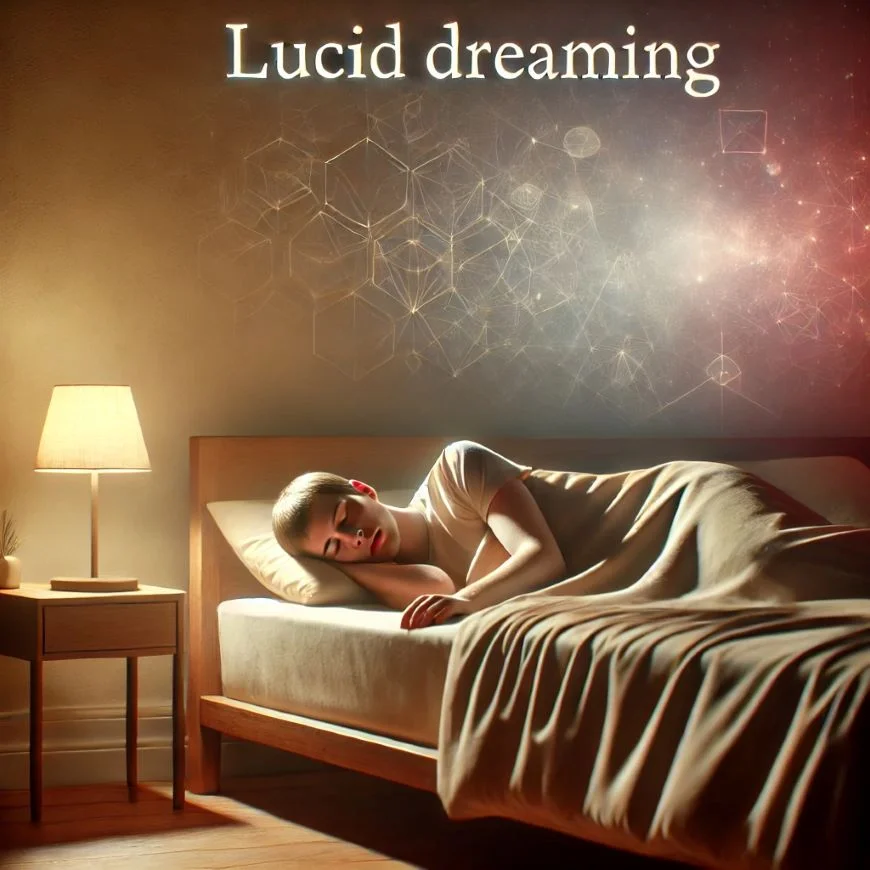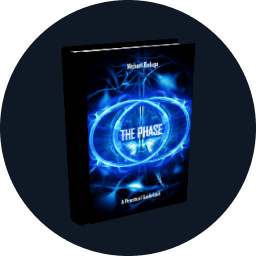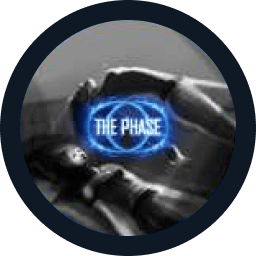Yes, it is possible to control your dreams through a scientifically proven state of consciousness called lucid dreaming. While some people are skeptical, and others simply struggle to remember their dreams, the ability to become aware and actively influence the dream world is a skill that can be learned. This guide explores the science, history, and practical methods behind lucid dreaming, answering the core question: how can you gain control over your dreams?
After all, it’s one thing to passively watch your dreams and take part in them indirectly, and quite another to realize you’re dreaming and actively influence the events unfolding in the dream. For those who struggle to remember their dreams, the ability to consciously control a dream might seem unrealistic. However, theoretically, everyone has the potential not only to dream and become aware of the process but also to affect it directly.
In reality, many people have spontaneously experienced lucidity in a dream at least once in their lifetime (Survey: “How Many People Have Experienced Lucid Dreams and Sleep Paralysis?”). For regular practitioners, the question of whether lucid dreaming exists has been settled. They know that lucid dreaming is possible, and they use their controlled dreams to solve problems, achieve goals, explore their abilities, and, of course, have fun.
The History of Lucid Dream Studies
Lucid dreaming as a practice has been known since ancient times. Dreams were often regarded as a form of communication with the gods or a means of understanding one’s true self. Ancient Greek philosophers like Plato and Aristotle wrote about a possible connection between dreams and reality. Papyrus records and hieroglyphs from ancient Egypt suggest that Egyptians considered dreams important and used them for healing purposes. In some cultures, lucid dreaming was seen as a way to prepare for the afterlife, and ancient Indian yogis used lucid dreams to develop spiritual capabilities.
Examples of such practices include:
- Dream yoga (Milam) in Tibetan Buddhism
- Swapna yoga or Nidra yoga in India
- Dream incubation in ancient Greece
These practices show that people have long considered dreams to be more than just a form of rest, although they were mainly approached from an esoteric and spiritual perspective.
In the mid-19th century, French Marquis d’Hervey de Saint-Denys wrote Dreams and How to Direct Them (“Les rêves et les moyens de les diriger”), in which he describes his methods for working with dreams. His work can be considered the beginning of the scientific approach to studying dreams.
In the early 20th century, Dutch psychiatrist and writer Frederik van Eeden continued the scientific exploration of controlled dreams. Van Eeden kept detailed dream journals to explore his experiences and actions in dreams, noting that in some dreams, he realized he was dreaming and could influence the events. He called these special controlled dreams “lucid dreams.”
In his article A Study of Dreams, published in The Journal of Society for Psychical Research, van Eeden coined the term “lucid dreaming,” which he used to refer to the state of being aware in a dream and the ability to control the events, actions, and plots within the dream. This marked an important milestone in the scientific and philosophical exploration of how dreams can be controlled.
In the second half of the 20th century, English researcher Celia Green studied the “paranormal phenomenon” of lucid dreams from a scientific perspective. Green gathered data on others’ lucid dreaming experiences, and her book Lucid Dreams (1968) laid the groundwork for future scientific studies on the subject.
In the 1970s, British psychologist Keith Hearne conducted the first study using polysomnography to determine whether lucid dreams exist. He objectively confirmed their existence.
American psychophysiologist Stephen LaBerge continued Hearne’s work. In 1980, LaBerge completed his dissertation, Lucid Dreaming: An Exploratory Study of Consciousness during Sleep. He used polysomnography and other methods to confirm the presence of consciousness during sleep and demonstrated that lucidity occurs specifically during the REM (rapid eye movement) sleep phase.
In 1990, LaBerge and American writer and researcher Howard Rheingold co-authored Exploring the World of Lucid Dreaming, which described practical methods for achieving lucidity during dreams.
These studies helped make lucid dreaming more accessible to the general public and sparked greater interest in the topic — especially among those asking, is there a way to control your dreams?
In the 21st century, Russian researcher Michael Raduga furthered the study of lucid dreams. Specifically, Raduga founded REMspace Inc., published several books, and developed free video lessons offering methods for achieving lucidity in dreams.
Currently, Michael Raduga is continuing his research on lucid dreaming and developing techniques that enable anyone to begin practicing lucid dreaming.
What Is Lucid Dreaming?
From a scientific perspective, a lucid dream is a unique state of consciousness that occurs during sleep, when a person maintains self-awareness. During a lucid dream, not only can a person understand that they are dreaming, but they can also (to varying degrees) influence both the dream’s events and their own behaviors and emotional states. This is a direct response to the fundamental question: is there a way to control your dreams?
How Is Lucid Dreaming Different from Regular Dreams?
Physiologically, lucid dreams occur during the REM phase of sleep, which is the phase when the brain’s activity resembles that of wakefulness and most vivid dreams occur. Polysomnographic measurements conducted by various researchers have confirmed this fact.
Neurophysiological data suggest that lucid dreaming involves increased activity in the prefrontal cortex, the area of the brain responsible for decision-making, planning, self-awareness, and controlling actions. There is also heightened activity in the hippocampus and other regions related to memory, orientation, and information processing. The increased levels of acetylcholine and other neurotransmitters associated with brain activity in the REM phase contribute to a more conscious state during sleep.
Psychologically, practicing lucid dreaming enhances one’s ability to maintain self-control and regulate their emotional responses. Lucid dreaming can help people manage emotional issues, alleviate stress, and improve self-understanding. It also provides a safe space to “rehearse” real-life situations and reactions. You can read more about these possibilities of lucid dreams in Michael Raduga’s book REM Psychology: Solving Psychological Problems in Lucid Dreams.
Conclusion
Scientific explanations of lucid dreams seek to uncover the biological and neural processes behind such dreams while also acknowledging their psychological and spiritual aspects. Research continues to make lucid dreaming more accessible to people and open up new possibilities for studying and applying lucid dreams in practical ways.
So, is there a way to control your dreams? According to decades of research, thousands of first-hand accounts, and modern methodologies developed by experts like Michael Raduga — the answer is yes. You can learn how to practice lucid dreaming by following Michael Raduga’s free video course (Complete Course on Lucid Dreaming from Beginner to Expert) and through his other lessons.
About the Author
Michael Raduga – the CEO and founder of REMspace Inc. He researches and develops innovative technologies for lucid dreaming, REM sleep, sleep paralysis, and more. His team is at the forefront of lucid dream innovations, conducting the most studies on the topic. The studies are published in peer-reviewed journals like Sleep Science, Sleep Medicine, Medical Hypotheses, Psychology of Consciousness, Dreaming, and covered by international media.
FAQ
How rare is a lucid dreamer?
Lucid dreaming is more common than many people think. Research and surveys suggest that a significant portion of the population has experienced at least one lucid dream in their lifetime. While spontaneous lucid dreams may be rare for some, others experience them regularly — especially those who actively practice techniques to induce lucidity. So while not everyone is a frequent lucid dreamer, the phenomenon itself is far from rare.
Can lucid dreaming be proven?
Yes, lucid dreaming has been scientifically proven. In the 1970s, British psychologist Keith Hearne used polysomnography to objectively confirm lucid dreams. Later, American psychophysiologist Stephen LaBerge further validated the existence of lucid dreaming through experiments that showed conscious awareness during REM sleep. These studies established that lucid dreaming is a real and measurable state of consciousness.
Can you randomly lucid dream?
Yes, it is possible to experience a lucid dream spontaneously, without using any specific techniques. Many people have reported random lucid dreams, often triggered by unusual or surreal events within the dream that prompt self-awareness. However, regular lucid dreaming typically requires practice and intention.
What is it called when you have a dream you can control?
When you are aware that you are dreaming and can control elements of the dream, it is called a lucid dream. This term was coined by Dutch psychiatrist Frederik van Eeden in the early 20th century. In a lucid dream, the dreamer can influence events, characters, and the environment with varying degrees of control.
Are lucid dreamers real?
Yes, lucid dreamers are very real. Countless individuals report having lucid dreams, and scientific studies have verified the phenomenon. People who practice lucid dreaming use it for personal growth, problem-solving, creativity, and exploration of consciousness.
Can you control your dreams?
Yes, it is possible to control your dreams during a lucid dream. While the level of control can vary, lucid dreamers often guide the storyline, interact with dream characters, or even change the dream environment. This conscious control is one of the defining features of lucid dreaming.
Is it possible to actually lucid dream?
Absolutely. Lucid dreaming has been confirmed by decades of scientific research. It is a natural state of consciousness that occurs during REM sleep, where the dreamer is aware they are dreaming. With the right techniques, many people can learn to experience lucid dreams regularly.
Is it possible to lucid dream without trying?
Yes, many people have had lucid dreams without any prior training or intent. These spontaneous lucid dreams often happen when something strange or impossible happens in a dream, prompting the dreamer to realize they are dreaming. While anyone can have a lucid dream randomly, consistent experiences usually require practice.
Recommended reading
How to learn to have lucid dreams
Are lucid dreams real and how to learn to be aware of them










